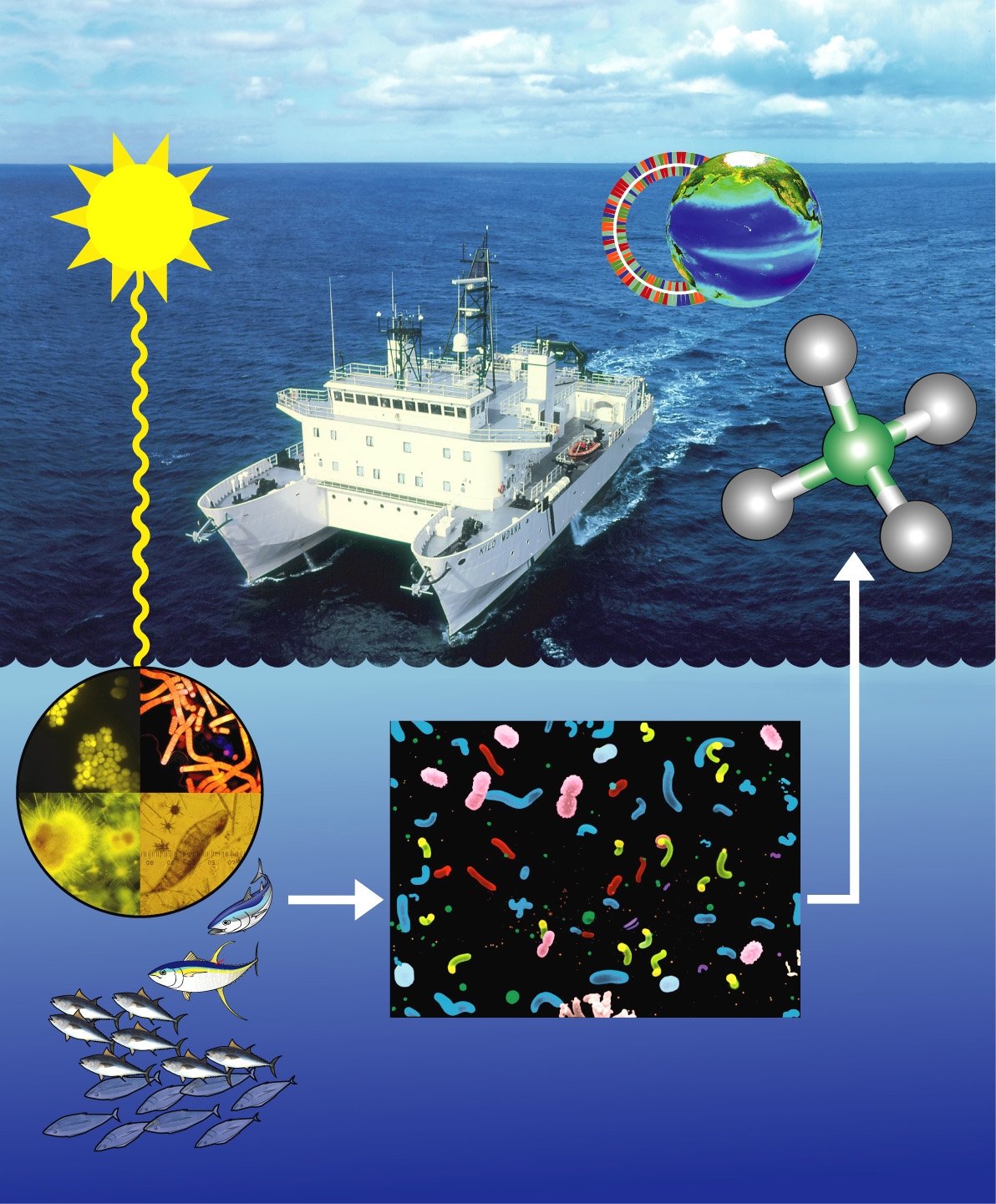NSF's public investment in science, engineering, education and technology
helps to create knowledge and sustain prosperity. Read here about the Internet,
microbursts, Web browsers, extrasolar planets, and more... a panoply of discoveries
and innovations that began with NSF support.
 |
 |
'Gone Bats' Over Aeroecology
New scientific discipline studies bats, birds, other animals in atmosphere closest to Earth's surface
Released
October 28, 2008
|
 |
 |
 |
Using Your Computer to Grow More Nutritious Rice for a Hungry World
Computational biologists use a powerful distributed computing network to research rice genome for increased yields of more nourishing rice varieties
Released
October 14, 2008
|
 |
 |
 |
Size Trade-off: Horns vs. Copulatory Organs
Indiana University biologist Armin Moczek explains his findings about the inverse relationship between horn and copulatory organ size in male beetles and how it affects species divergence
Released
September 30, 2008
|
 |
 |
 |
The Bizarre Creatures of Madagascar
Paleontologist David Krause describes his search for the ancestors of mammals that live in Madagascar today
Released
September 24, 2008
|
 |
 |
 |
Researcher Walks Among Dying Baby Chimps
Virginia Tech scientist Taranjit Kaur describes her team's research studying chimpanzees in western Tanzania and the virus that is threatening the chimps’ health
Released
September 9, 2008
|
 |
 |
 |
Bones in Lava Tubes Reveal Hawaii's Natural History
Michigan State University's Matthew Cimitile describes a Hawaiian adventure exploring lava tubes in search of bird bones from endangered and extinct species
Released
August 22, 2008
|
 |
 |
 |
A Thousand Points of Light: Bioluminescent Fungi
San Francisco State University Mycologist Dennis Desjardin Takes Readers Along on a Nocturnal Hike in a Brazilian Forest to Find Glowing Mushrooms
Released
August 15, 2008
|
 |
 |
 |
Crumbling Walls of Ancient Chesapeake Bay Crater Threaten Regional Groundwater Supplies
Saltwater intrusion into collapsing crater also allows microbes to flourish
Released
August 12, 2008
|
 |
 |
 |
Researcher Says Life Evolved Between the Mica Sheets
Biophysicist Helen Greenwood Hansma of the University of California, Santa Barbara, on the origin of her new hypothesis for the origins of life
Released
July 14, 2008
|
 |
 |
 |
Methane Formation in the Oceans: New Pathway Discovered
Significant importance for study of greenhouse gas production on Earth
Released
July 10, 2008
|
 |
 |
 |
Environmental Programs in China Successful, Study Finds
Key reforms could turn them into world models
Released
July 10, 2008
|
 |
 |
 |
What's Behind the Crazy Shapes of Fruits
Ohio State researchers discover and clone a gene that controls the shape of tomatoes
Released
July 8, 2008
|
 |
 |
 |
Beauty Is in the Genes of the Beholder
New research on American pronghorns explains why not everything is about looks
Released
July 3, 2008
|
 |
 |
 |
The Freaky Fishes of the Congo
American Museum of Natural History ichthyologist Melanie Stiassny takes us on a journey down the Congo River to explore its rich fish diversity
Released
May 20, 2008
|
 |
 |
 |
How to Capture Yellow Jackets (and Not Get Stung)
Georgia Tech assistant biology professor Michael Goodisman on the thrill of collecting yellow jacket nests and why he studies these dangerous but important social insects
Released
May 14, 2008
|
 |
 |
 |
Microbes to People: Without Us, You're Nothing!
How tiny microbes run the world
Released
April 21, 2008
|
 |
 |
 |
The World's Smallest Whistle-Blowers: Microbes
Microbes warn of ecological damage
Released
April 21, 2008
|
 |
 |
 |
New Species Found in Mysteriously Diverse Jungle
Louisiana State University's Chris Austin describes his work studying the diversity of life on the island of New Guinea
Released
March 17, 2008
|
 |
 |
 |
2007: Year in Review
A look back at some of the NSF-supported advances and activities reported last year
Released
January 30, 2008
|
 |
 |
 |
Quakes Under Pacific Ocean Floor Reveal Unexpected Circulation System
Research upsets long-held view of volcanism-driven hydrothermal vents
Released
January 11, 2008
|
 |
 |
 |
Winter Ice on Lakes, Rivers, Ponds: A Thing of the Past?
Records over 150 years show trend toward fewer days of ice cover
Released
January 10, 2008
|
 |
 |
 |
Clams Convert Air Into Food
Trait no longer the domain only of plants
Released
January 10, 2008
|
 |
 |
 |
Top Scientists Promote Innovative, Multidisciplinary Global Problem-Solving Strategies
Released
December 11, 2007
|
 |
 |
 |
Stability and Diversity in Ecosystems
Scientists say focus on stability
Released
August 3, 2007
|
 |
 |
 |
Birds Follow Army Ants to Find Prey
Crafty birds deep in the jungles of Panama have found a unique hunting strategy: following army ants and picking off prey that try to escape the crawling swarm.
Released
June 1, 2007
|
 |
 |
 |
Sea Turtle Conservation Method Could Have Unintended Consequences for Sharks, Marlins
Circle-shaped fishing hooks not a panacea for tuna, swordfish longliners
Released
May 7, 2007
|
 |
 |
 |
2006: Year in Review
A look back at some of the NSF-supported activities highlighted last year
Released
January 9, 2007
|
 |
 |
 |
Fat Regulating Hormone Found in Amphibian
In tadpoles, leptin may signal when it is time to sprout limbs
Released
August 8, 2006
|
 |
 |
 |
West Coast Kelp Forest Ecosystems At Risk
Overfishing Has More Effect Than Nutrient Pollution
Released
June 8, 2006
|
 |
 |
 |
Swimming Robot Tests Theories About Locomotion in Existing and Extinct Animals
May explain why four-flippered swimmers now use only two
Released
May 30, 2006
|
 |
Page: Previous | 































